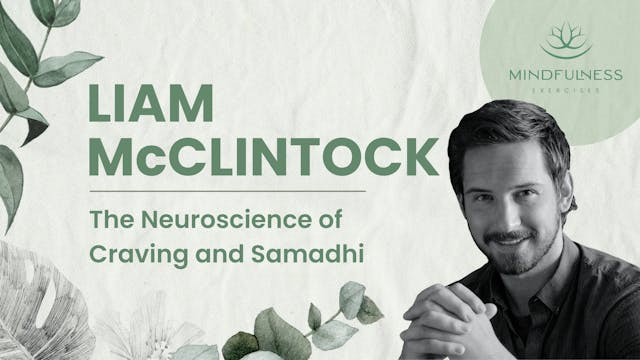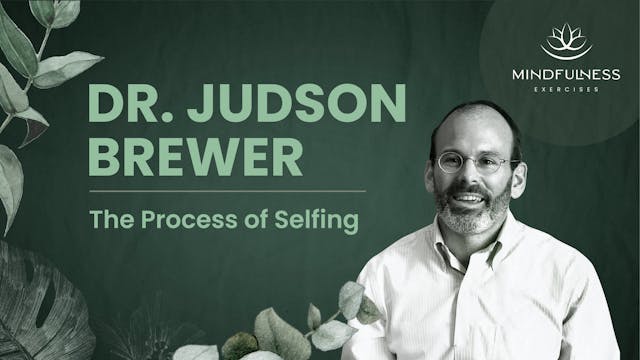The Neuroscience of Mindfulness - Dr. Rick Hanson
Explore the Science of Mindfulness & Meditation
•
2h 5m
Rick Hanson, PhD, is a psychologist, senior fellow of the Greater Good Science Center at UC Berkeley, and New York Times bestselling author. His books are available in twenty-eight languages and include Resilient, Hardwiring Happiness, Just One Thing, Buddha’s Brain, and Mother Nurture.
To date, his books have sold more than 750,000 copies in English.
He edits the Wise Brain Bulletin and has numerous audio programs. A summa cum laude graduate of UCLA and founder of the Wellspring Institute for Neuroscience and Contemplative Wisdom, he has been an invited speaker at NASA, Oxford, Stanford, Harvard, and other major universities, and has taught in meditation centers worldwide. He and his wife live in San Rafael, California, and have two adult children.
Learn more about Dr. Rick Hanson: https://www.rickhanson.net/
Discover Dr. Rick Hanson's books: https://www.rickhanson.net/writings/
00:01:29 – Sean Fargo introduces Dr. Rick Hanson
00:04:51 – Introduction from Rick Hanson
00:06:22 – Rick’s outline for the session
00:09:22 – Guided meditation practice
00:32:56 – Rick’s definition of mindfulness
00:35:55 – The importance of offering alternatives to the body to ground awareness
00:36:49 – Brain activity when we are engaged in task-oriented activity, daydreaming, or ruminating
00:40:09 – Activating networks on the sides of the brain
00:42:16 – Breathing with the chest or the body as a whole
00:45:09 – Evoking particular states of being and cultivating particular traits
00:47:12 – How can we increase the conversion from state to trait?
00:51:25 – Weaving together the subjective and the objective
00:54:11 – Member question: What parts of the brain are active during the feeling of embodiment?
00:58:34 – As we tune into our physical body, we increase our capacity to tune into the experience of others
01:00:04 – Four different ways mindfulness meditation changes your brain
01:03:14 – Three psychological qualities that feed the conventional presumption that there is a self entity within
01:10:06 – Reducing verbal activity and mental time travel
01:16:04 – Member question: How long does it take people to move from state to trait?
01:20:12 – Getting people interested in their own learning
01:23:06 – First paragraph of Neurodharma
01:24:29 – Seven qualities of all those beings we deeply admire and respect
01:28:49 – Cultivating all seven qualities through different routes
01:31:50 – Guided practice/walk-through of the seven qualities
01:49:07 – Member question: Is there science behind the observed effects of practices like qi gong?
01:55:05 – Two framing devices: “Deal with the bad, turn to the good, take in the good” and “Let be, let go, let in”
01:57:21 – The importance of lifting your gaze to the horizon
02:01:29 – Closing remarks from Sean
02:03:42 – Three closing proverbs from Rick
Up Next in Explore the Science of Mindfulness & Meditation
-
Managing the Adverse Effects of Mindf...
Dr. Britton earned a B.A. in Neuroscience from Colgate University in 1996 and a Ph.D. in Clinical Psychology from the University of Arizona in 2007. She is the recipient of two National Research Service Awards (NRSA) and a Career Development Award (CDA) from the National Institutes of Health (NI...
-
The Neuroscience of Craving and Samad...
Liam McClintock is the Founder & CEO of FitMind, a mental fitness technology company. The FitMind approach is taught at Fortune 500 companies, addiction centers, schools, government organizations, and via mobile app.
Liam also hosts The FitMind Podcast, engaging various experts on the mind rangi...
-
The Process of Selfing - Dr. Judson B...
Dr. Jud Brewer works in the field of habit change and the “science of self-mastery”, combining over 20 years of experience with mindfulness training and a career in scientific research. He is passionate about understanding how our brains work, and how to use that knowledge to help people make dee...



